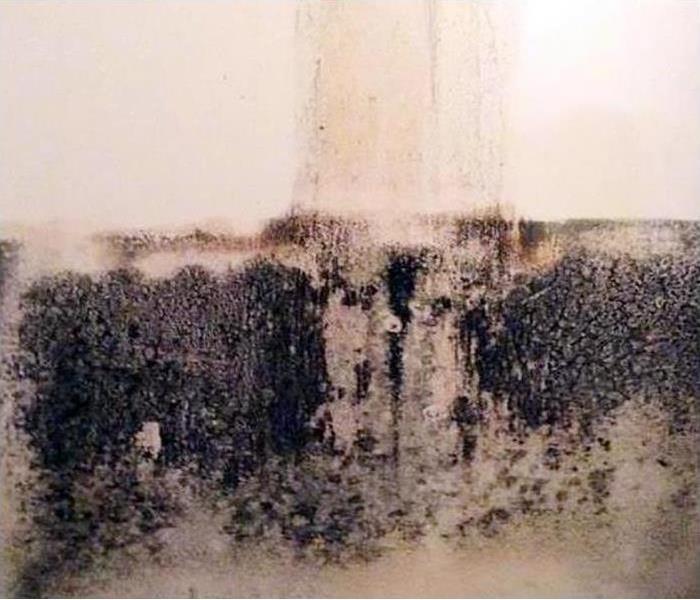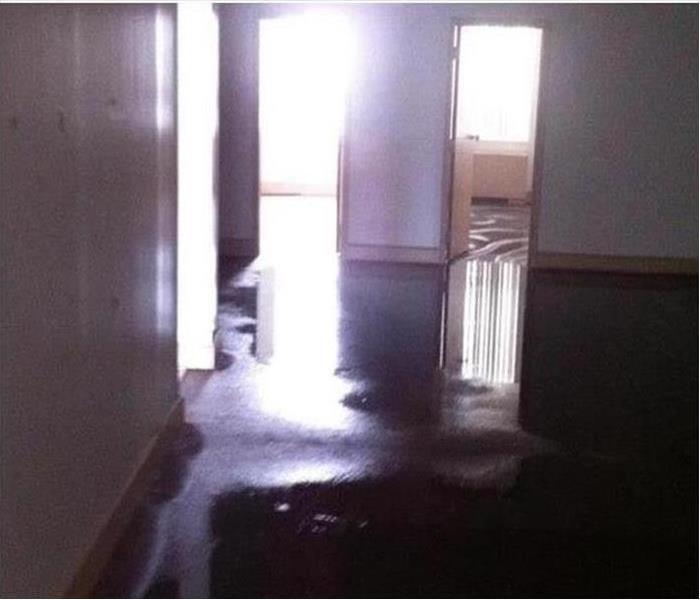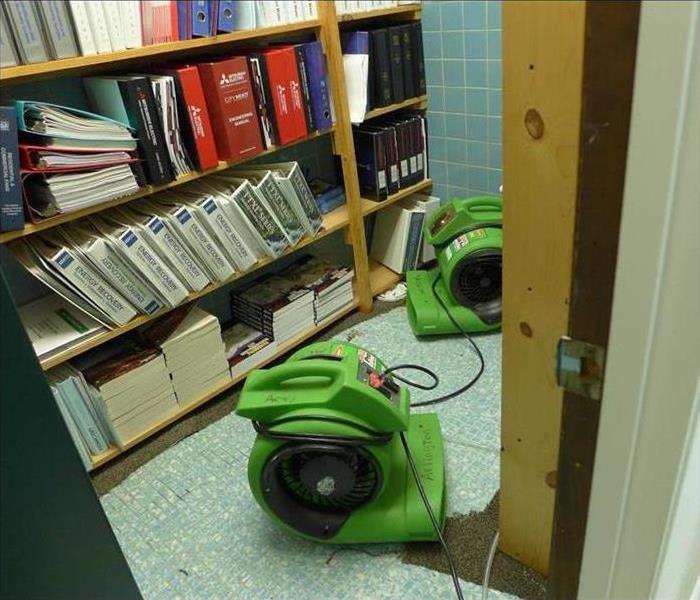Recent Commercial Posts
How Much Revenue Can I lose After a Fire?
10/8/2022 (Permalink)
How Much Income Can I Lose Following a Fire?
After a fire, you need to make sure that your business is able to get back on its feet as soon as possible. This means making sure that you have the right insurance coverage in place and that a highly trained and experienced restoration company is onsite as quickly as possible. If you don't have the right coverage in place, it can lead to long-term consequences for your business.
Fire damage can lead to severe income loss.
Fire damage can lead to severe income loss and may even put you out of business. The time it takes to recover depends on the extent of the damage, but with proper management and planning, you can get back on track in no time.
How much time does it take for a business to recover financially after fire damage?
Your insurance company should have an estimate for how long it will take for you to get back on your feet financially after a fire. They do this by estimating how much revenue can be lost due to downtime and lost profits during that time period.
How much revenue can I lose after a fire?
This is where things get tricky because we all know different industries will experience different levels of loss following the incident. If there's $1 million worth of property damage but only 30 days' loss in normal operations - then this could mean over $2 million dollars in damages overall!
Business income coverage addresses the revenue you lose from a fire.
Business income coverage is a form of property insurance that provides protection for business owners against the loss of revenue they might incur after a fire. These policies can help with operational expenses and repairs to your property, which means you won't have to take so much out of your bank account every month.
Your business insurance can help you continue operations in case of fire damage.
When your business is impacted by fire damage, you need to ensure that your financial needs are met. This type of coverage can help with the cost of cleanup and repairs, lost income, lost business records and inventory.
While a fire can be devastating, it's important to know that you can get back on your feet with the right insurance policies and the right restoration company helping you out.
The business interruption coverage option may help you continue operations after a fire. This policy pays for lost revenue if damaged inventory or equipment prevents you from opening your doors as usual. The good news is that business interruption coverage covers many kinds of losses and allows you to stay open for as long as possible after suffering from fire damage.
If your business suffers a fire, you may be able to recover some of the revenue losses with this kind of coverage. In any case, it’s important to have a good understanding of what your insurance will cover and how much you can expect to get back after a fire. If you are in need of fire damage cleanup and restoration services in Jacksonville, FL, don't hesitate and give our SERVPRO team a call today!
What To Look for When Troubleshooting a Commercial Irrigation System
7/28/2022 (Permalink)
How to Troubleshoot a Commercial Irrigation System
A faulty sprinkler system can be a huge problem for your business in San Marco, FL. If sprinklers malfunction, they might spray excessive amounts of water in the area, which could disrupt business operations or even cause structural damage to the building.
If you see a problem in your building's irrigation system, you may not know how to find the source of the damage. Here are several things to look for when troubleshooting.
1. Electrical Issues in the Irrigation System
There are many electrical parts in the system that can be damaged, such as valves, solenoids, wires, and timers.
2. Broken Pipes and Sprinkler Parts
If someone steps on a sprinkler head and damages it, the sprinkler may start to malfunction. A broken sprinkler head may be easier to fix than an electrical issue.
3. Damage From Tree Roots
One of the common causes of pipe damage is pressure from tree root systems.
4. Stress From Traffic
Extensive foot traffic in the area over an irrigation system can create stress that damages pipes and supply lines. If this is an issue, you may need to evaluate the placement of the sprinkler system and how you might change it.
5. Evidence of Water Damage
If you see that standing water has leaked into a building or commercial structure, you should be wary of potential damage to the building's structures and mold growth. Even if you cannot see any flooding, there may be serious damage nonetheless. A large sprinkler leak can cause water to seep into the basement or the building's foundation.
If you suspect that there may be water damage, it is a good idea to reach out to a professional water restoration company. A team of professionals can help you assess the damage and prevent mold growth.
Looking for these common issues may help you diagnose irrigation problems. If you are unable to ascertain the source of damage yourself, seek professional help.
4 Tips for Keeping Mold Out of Your Rental Homes
4/25/2022 (Permalink)
 Mold damage in Brooklyn, FL.
Mold damage in Brooklyn, FL.
Mold Prevention
The best way to avoid water damage from mold growth is to be very serious about mold prevention. Use the following list of tips to reduce the risk of mold and related damage in your Brooklyn, FL, rental properties:
Inspect Your Property
One of the reasons that mold is a common problem is that it survives well in a variety of situations and especially in dark, out-of-the-way corners. Your very first step should be peeking into those corners, inside closets and cabinets, in the basement, at the foot of the shower, and in the attic. Look for visible signs of mold and for any signs of water or moisture.
Teach Renters To Clean Up Spills and Leaks Immediately
It's easy to think that a spilled glass of water isn't problematic, but, in reality, anytime you leave moist areas on the carpet or watery footprints on the floor of the bathroom, mold could begin to grow. Mold prevention requires that your renters respond immediately to any type of water in places where it shouldn't be. Even in places such as sinks and showers, the humidity levels must be controlled.
Lower the Thermostat and Increase Ventilation
A cozy warm corner with consistent humidity is inviting to mold spores, so keeping your properties a bit cooler during humid weather could reduce the risk of mold. Airflow is effective at reducing humidity in bathrooms and kitchens. Discuss these facts with renters.
Reach Out to Professionals
If there's already mold on the property, contact mold remediation professionals right away. With specialized equipment and training, these technicians can respond thoroughly to existing colonies. It only takes a little hidden spot of mold to grow throughout your rental property.
Use these mold prevention tips to protect your rental property. Thoroughly inspect for water and mold, clean up all moisture, use temperature to resist mold growth, and get help when you need it.
Why Does My Commercial Building Smell Like a Forest?
3/14/2022 (Permalink)
Keep Your Building Mold - Free
The way a property smells tells a lot about the condition of its construction materials. A musty, forest smell is a clear signal that there is mold growing somewhere in the building. When the fungus is given the conditions to grow, the chemical compounds it releases in its various stages of growth will give off an odor. These are known as microbial volatile organic compounds, or MVOC's. Property owners in Southside, FL, describe it as the smell of dirt or wet dog. Mold thrives on:
- Wood
- Grout
- Concrete
- Insulation
- Drywall
If a musty smell circulates when the HVAC system turns on, it is likely the mold is inside of the air ducts. Here are three ways a professional HVAC cleaning service will keep your building mold-free:
1. Improved Air Quality
Mold spores are airborne microscopic particles that will circulate throughout the building with each use of the HVAC system. The air quality of a building is measured by how much pollution is recorded. This is determined by the number of particles traveling the air. Having your cooling system cleaned regularly will lessen the number of particles in the air, improving the overall air quality.
2. Controlled Humidity Levels
Your HVAC system protects your building from the natural elements that threaten to decompose it. Mold thrives in dark, damp spaces that offer the right nutrients. Keeping the humidity levels at 40-60% will ensure the construction materials remain dry, protecting them from an invasion of fungus.
3. Prevents Hidden Mold
The dust inside of your HVAC air ducts is an excellent source of nutrition for fungus. The ducts also provide a damp, dark environment, giving mold optimal conditions to develop. An HVAC cleaning service will ensure your air ducts are cleaned, preventing a mold problem from circulating.
Cleaning vents and having your HVAC system serviced at least once a year will contribute to a healthy, longer-lasting building. Hire an HVAC cleaning service to keep your system from spreading fungus. If your commercial property smells like mildew, you can contact a professional mold remediation service to help clean and restore the building.
Do’s and Don’ts of Business Water Damage
2/28/2022 (Permalink)
 A flooded business in Lakewood, FL.
A flooded business in Lakewood, FL.
What To Do When Floods Hit Your Business?
What should you do when water rises in your building and threatens to cause water damage? How do you tackle the problems that broken pipes bring, including the tremendous job of water cleanup? The better question may be “what should I never do?” Here are a few things you should always keep in mind when floods hit your business:
- Don’t panic. Have a plan instead.
- Don’t use electricity in the area.
- Don’t wait to act.
- Don’t go it alone.
These are some actions that you should avoid, but what should you do instead? Follow these steps to prevent further water damage:
1. Secure the Area
Your safety and the safety of those in your building should be your primary concern. If the flood is from a broken pipe, first shut off electricity to that area of your building to keep people from receiving an electric shock. Then, finish securing the area by stopping the water. You can do this either at the faucet itself or by turning off the main water to the business.
If the flood is from a rainstorm, get to higher ground and call for help. Always put your safety above the things in your building. The belongings can be replaced or restored; you are irreplaceable.
2. Call for Help
Once it is safe to do so, call a professional restoration crew. These experts can restore the damage that water caused and get your life back to normal. Some such companies in Lakewood, FL are open 24/7 to help, so there’s no reason to wait.
3. Begin Cleanup
If the water came from broken pipes, you might not have to wait for the restoration crew to arrive to begin cleaning up. You can start removing porous materials and cleaning damaged belongings. The longer you wait, the more water damage can occur. If you’re not sure how to get started with water cleanup, ask the restoration company in Lakewood, FL when you call.
3 Steps To Minimize Mold Damage After Flooding
2/23/2022 (Permalink)
 The quicker we can dry out your property, the better!
The quicker we can dry out your property, the better!
Minimizing Potential Mold Growth
You’ve found yourself in one of the worst situations most business owners in Deerwood, FL can imagine: Your building has flooded. Whether the water intrusion is from a storm or plumbing issue, there is no time to waste after flooding. Destructive mold growth can begin in 24 to 48 hours. Here are three steps to take in the critical hours following a flood.
1. Dry Affected Areas
Drying is the most important step in the cleanup process and should begin as quickly as is safe after a flood event. All standing water should be cleaned up and removed by a commercial restoration service. Saturated items such as upholstered furniture should be taken outdoors to dry if conditions permit.
Carpeting that has been exposed to flooding should be taken out of the building. Drywall that has been saturated will need to be cut away.
Get as much air circulating as possible. Open windows and run air conditioning. Bring in portable heaters and consider renting a dehumidifier. Spores need moisture to thrive. Removing the moisture quickly will help minimize mold growth.
2. Discard Unsalvageable Property
Some items, such as carpet and carpet pads, extremely saturated furnishings and cardboard boxes of printed materials will need to be thrown away. Be realistic with yourself here. Don’t keep items that you know will be damp for a considerable amount of time.
3. Clean Thoroughly
Clean hard surfaces with a disinfecting detergent to remove harmful bacteria. If mold is present, scrub it off. You should dry surfaces promptly after cleaning.
Porous, absorbent material such as ceiling tile and drywall generally can’t be cleaned once thoroughly soaked. Once mold has been detected in these items, it can be nearly impossible to remove spores.
Minimizing potential mold growth following a flood can be a painstaking process. It is crucial to act fast, dry and clean thoroughly, then determine what property can’t be saved. Follow these steps to quickly return to business as usual.






 24/7 Emergency Service
24/7 Emergency Service

